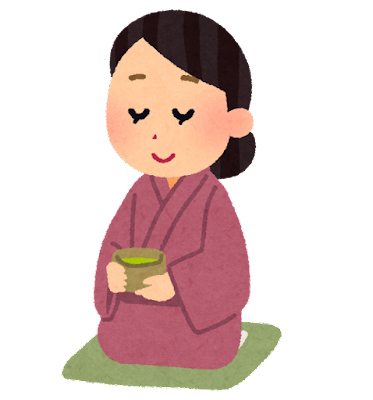1) History of Japanese tea
The history of Japanese tea is old, going back centuries. It is said that tea was first drunk in Japan in the early 9th century when a Buddhist monk brought tea leaves from China. After that, tea spread rapidly among Japanese aristocrats and aristocrats.
During the Kamakura period (1185-1333), tea spread among the common people. The rise of the samurai during the Kamakura period (1185-1333) also explains why people started drinking tea to keep themselves awake after long battles.
During the Muromachi period (1336-1573), tea ceremony called ‘chanoyu’ or ‘chado’ developed. The ritual of making and drinking tea was first started by Zen Buddhist monks. The tea ceremony is still practiced today and is an important part of Japanese culture.
2) Types of Japanese tea
There are many types of tea in Japan, each with its own unique flavor and characteristics. Typical examples are green tea, matcha, sencha, and gyokuro.
Green tea is the most popular type of tea in Japan. Made from unfermented tea leaves, it has a light, grassy flavor. Matcha is a type of green tea that is made by crushing tea leaves into powder. It has a strong umami flavor and is often used in Japanese cuisine.
Matcha is made by grinding the young leaves of green tea. It is grown in shade for several weeks before harvest to increase the chlorophyll content and produce a bright green color. After harvesting, the leaves are steamed, dried and stone ground into a fine powder. Matcha has been used in traditional Japanese tea ceremonies for centuries. It is also popular as an ingredient in various dishes such as ice cream, lattes, and baked goods.
Sencha is also a type of green tea, made by rounding and drying tea leaves. It has a light sweetness and is the most popular type of tea in Japan. Gyokuro is a type of green tea made from tea leaves grown in the shade. It has a rich sweetness and is considered to be the highest grade of green tea.
Gyokuro is a type of blackout green tea from Japan. Because it is grown under 20-40% of the sunlight of other green teas, it has a high chlorophyll content and a bright green color. In addition, gyokuro contains a lot of amino acids and has a sweet and umami flavor. It is a common tea to drink in spring. Gyokuro tea leaves are picked about two weeks before the first flush of sencha, when the young leaves are at their softest. Gyokuro is picked by hand to avoid damaging the delicate tea leaves. After picking, the tea leaves are steamed and rolled in the same way as sencha. However, gyokuro is steamed for a shorter time to maintain its bright green color.
3) Characteristics of Japanese tea
Japanese tea is known for its high quality and health benefits. Tea leaves grown in a clean environment are carefully processed to preserve their flavor and nutrients. As a result, Japanese tea is rich in antioxidants, and many health benefits can be expected.
Japanese tea is also known for its delicate flavor. The tea leaves are carefully grown and processed to preserve their flavor. As a result, Japanese tea achieves a unique and refreshing taste that many people love.
4) How to enjoy Japanese tea
There are many ways to enjoy Japanese tea. The most common method is simply boiling with hot water. This method is called “Ocha” and is the simplest way to enjoy the taste of tea.
Another popular way to enjoy Japanese tea is cold brew tea. This is a method of soaking tea leaves in cold water for a long time. A refreshing and mellow tea that is perfect for summer is ready.
JAPANESE TEA CULTURE


